8 min read
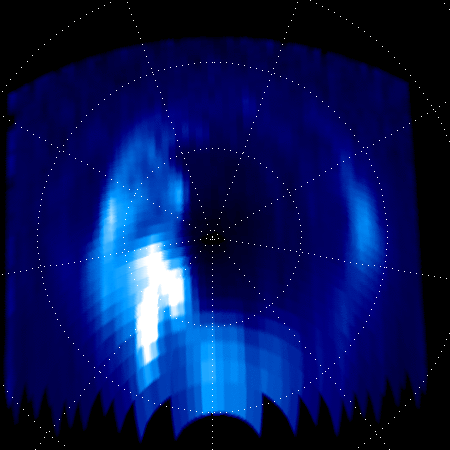
Cassini used its Ultraviolet Imaging Spectrograph to capture this final view of ultraviolet auroral emissions in Saturn's north polar region on Sept. 14, 2017.
NASA/JPL/Univ. Colorado/Univ. Liege-LPAP
- Cassini found evidence that hydrogen gas, which could potentially provide a chemical energy source for life, is pouring into the subsurface ocean of Enceladus from hydrothermal activity on the seafloor.
- The presence of ample hydrogen in the moon's ocean means that microbes – if any exist there – could use it to obtain energy by combining the hydrogen with carbon dioxide dissolved in the water. This chemical reaction is known as "methanogenesis.
- The discovery was made during Cassini's deepest-ever dive through the plume on Oct. 28, 2015. (Learn more here: NASA Missions Provide New Insights into ‘Ocean Worlds’ in Our Solar System)
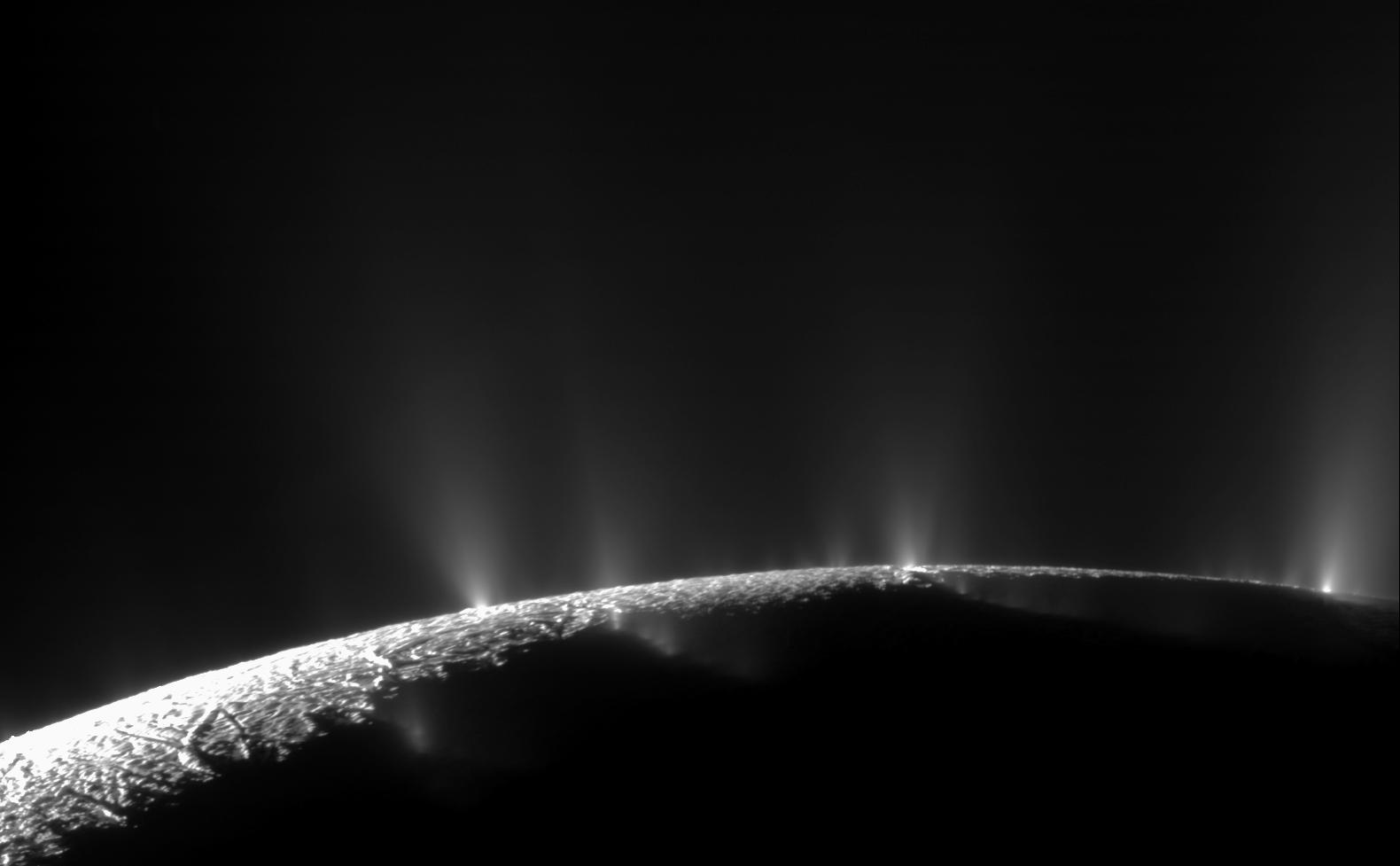
Dramatic plumes, both large and small, spray water ice and vapor from many locations along the famed "tiger stripes" near the south pole of Saturn's moon Enceladus.
NASA/JPL/Space Science Institute
- Ring scientists were puzzled that the narrow gap between Saturn and its rings appeared to be relatively dust-free. This assessment was based on data Cassini collected during its first dive through the region on April 26, 2017.
- Cassini's Radio and Plasma Wave Science instrument detected hundreds of ring particles per second when it crossed the ring plane just outside of Saturn's main rings, but only detected a few pings on April 26.
- A dustier environment in the gap might have meant the spacecraft's saucer-shaped main antenna would be needed as a shield during most of the subsequent dives through the ring plane.
- The Radio and Plasma Wave (RPWS) team's analysis suggested that the RPWS antennas, capable of detecting ring particle impacts, only encountered a few particles as Cassini crossed the gap - none were larger than those in smoke (about 1 micron across).
- However, in this same region, the Cosmic Dust Analyzer (CDA) detected a large number of tiny particles that were much smaller than those could be detected by the RPWS antennas. One big question is what happened to all of the larger particles that models predicted would be there. Fortunately, these tiny ring particles did not represent a hazard to the Cassini spacecraft.

Cassini Project Manager Earl Maize waits for Cassini's signal with the spacecraft's operations team in mission control at JPL on April 26, 2017.
NASA/JPL-Caltech
- Several Grand Finale passages allowed for imaging "noodles" of Saturn at high resolution from pole to pole.
- Cassini successfully imaged all six of the small ring features called "propellers" whose orbits were being tracked over the last several years of the mission, further revealing insights into their properties and interaction with the rings.
- Early estimates from the Grand Finale imply that Saturn's magnetic field tilt is less than 0.06 degrees. Thus, the precise length of a day on Saturn still eludes scientists.
- Cassini saw evidence that molecules from the rings are raining down onto the atmosphere. This influx of material from the rings was expected, but data show hints of ingredients more complex than just water, which makes up the bulk of the rings' composition. In particular, the instrument detected methane, a volatile molecule that scientists did not expect to be abundant in the rings nor found so high in Saturn's atmosphere.
- New analyses reveal that the gravitational influences of seven moons (including Pan, Atlas, Prometheus, Pandora, Janus, Epimetheus and Mimas) combine to keep the A ring from spreading out and dissipating.
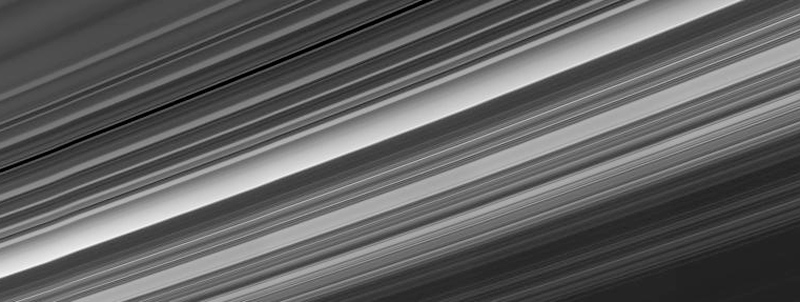
Cassini obtained this panoramic view of Saturn's rings on Sept. 9, 2017, just minutes after it passed through the ring plane. The view looks upward at the southern face of the rings from a vantage point above Saturn's southern hemisphere.
NASA/JPL-Caltech/Space Science Institute
- The region of space between Saturn and its rings that is shaded by the rings themselves has less ionized gas, or plasma, than regions in sunlight.
- Scientists hypothesize that the reduced sunlight in the shadowed region leads to less ionization of any gas that happens to be in that space.
- While there is less plasma in this region, there is still activity that may be related to a phenomenon called "ring rain," where charged water molecules migrate from the innermost ring to the planet.
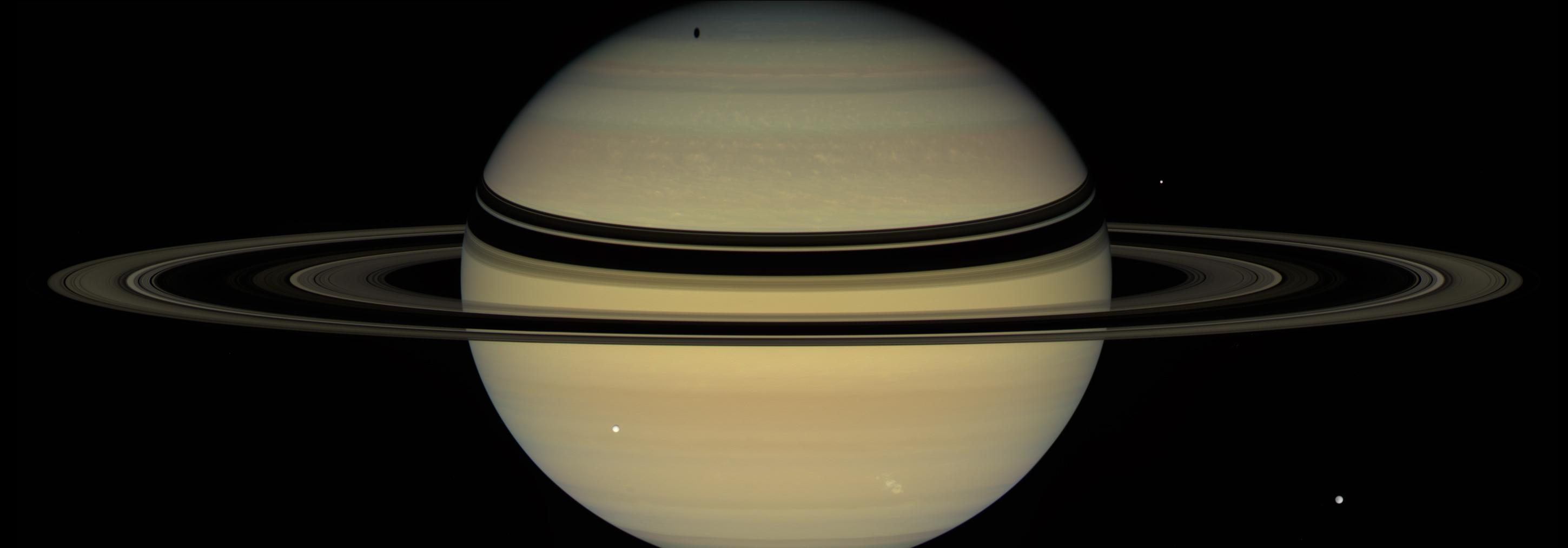
Two kinds of dramatic shadows play across the face of Saturn in this view from NASA's Cassini spacecraft from Dec. 6, 2007. The planet's rings cast dark bands across the cloud tops in the northern hemisphere. Near the pole, an elongated shadow can be seen from Saturn's moon Tethys, which appears as a bright sphere left of center.
Other icy moons make an appearance as well, including Dione (front right) and Enceladus (back right). A bright storm can be seen in Saturn's southern hemisphere at lower right.
NASA/JPL-Caltech/Space Science Institute
- Cassini's Ring Grazing Orbits (Nov. 2016 - April 2017) allowed for the closest-ever imaging observations of the ring moons Atlas, Daphnis and Pan.
- Observations of Daphnis also revealed its gravitational interactions with the nearby rings.
- Pan and Atlas were revealed to have ridges around their equators and a fairly smooth mantle of material on their surface – likely an accumulation of fine particles from the neighboring rings. Only few craters are obvious on their surfaces.
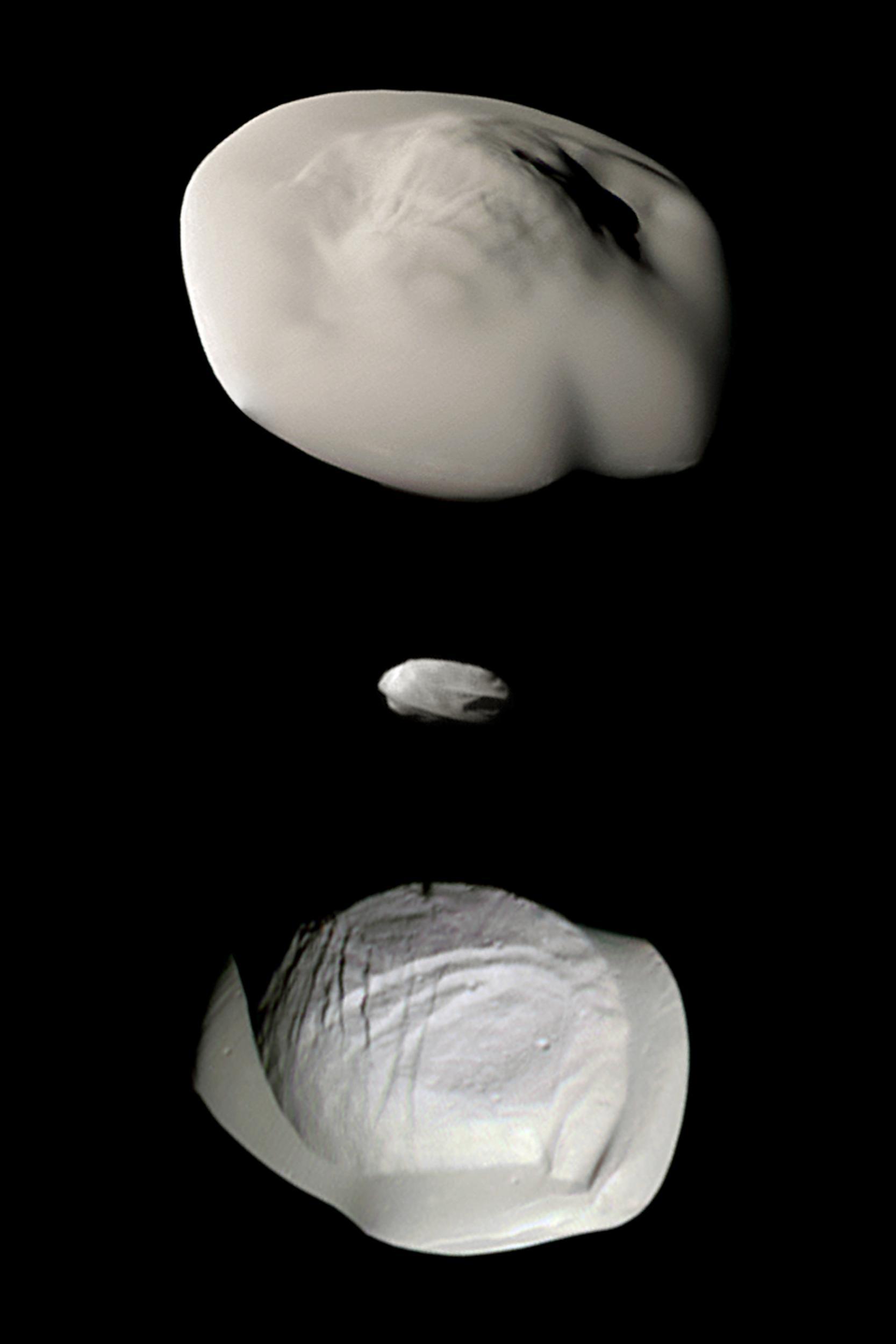
This montage of views from NASA's Cassini spacecraft shows three of Saturn's small ring moons: Atlas, Daphnis and Pan at the same scale for ease of comparison.
NASA/JPL-Caltech/Space Science Institute
- Cassini's highest resolution ring images reveal the rings to have varied structure down to the smallest scales observable by the spacecraft's cameras.
- Although Cassini saw these features with names like "straw" and "propellers" earlier in the mission, the spacecraft's final, ultra-close orbits provided opportunities to see them in greater detail. Some images resolved details as small as 0.3 miles (550 meters), which is on the scale of Earth's tallest buildings. The features are caused by clumping ring particles and small, embedded moonlets.
- Images of features in Saturn's C ring called "plateaus" have deepened the mystery surrounding them. These bright bands have a streaky texture that is very different from the textures of the regions around them.
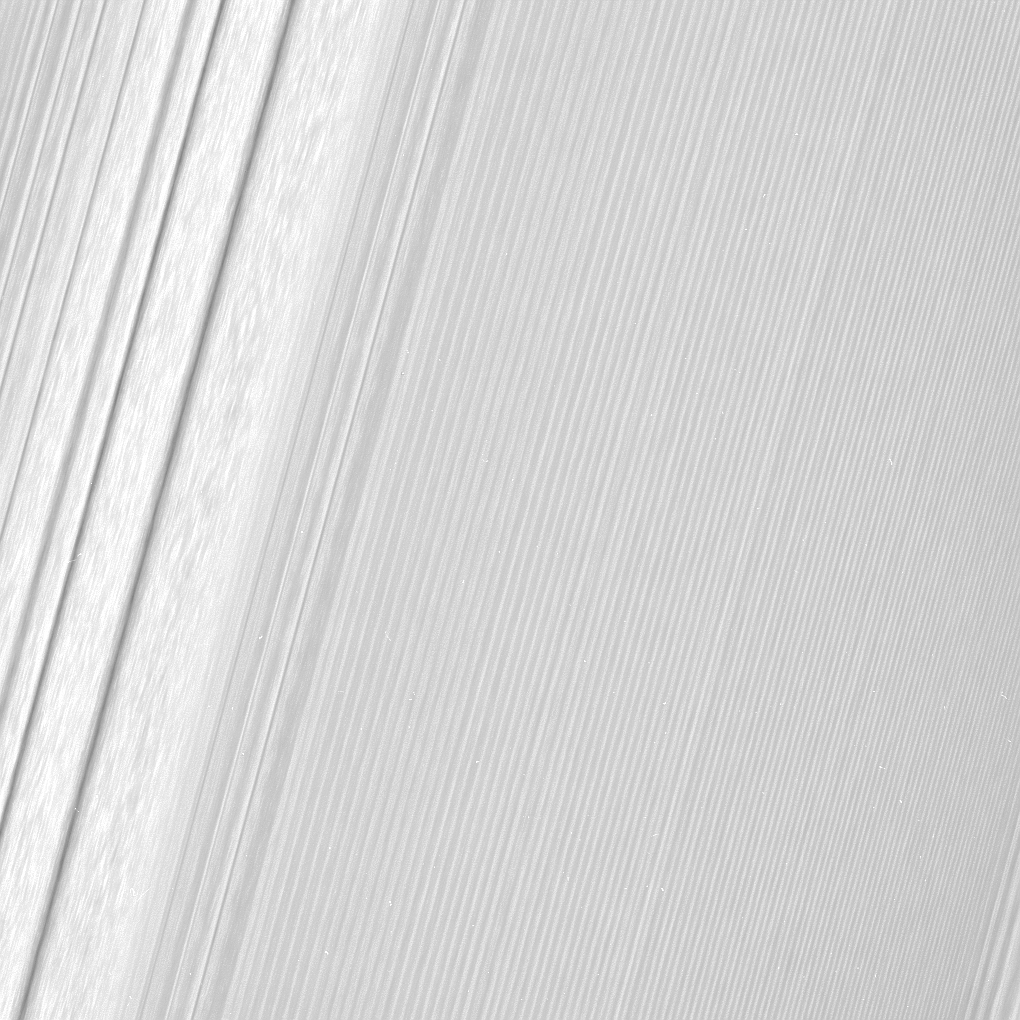
This Cassini image features a density wave in Saturn's A ring (at left) that lies around 134,500 km from Saturn. Density waves are accumulations of particles at certain distances from the planet.
NASA
- A modeling study showed that heat from friction could power hydrothermal activity on Enceladus for billions of years if the moon has a highly porous core.
- Simulations show that as Enceladus orbits Saturn, rocks in the core flex and rub together, generating heat. The loose interior also allows water from the ocean to percolate deep down, where it heats up, then rises, interacting chemically with the rocks.
- This activity should be at a maximum at the moon's poles, where plumes of the warm, mineral-laden water gush from the seafloor and travel upward, thinning the moon's ice shell from beneath to just half a mile to 3 miles (1 to 5 kilometers) at the south pole.
- Using microwave measurements from Cassini's radar antenna, scientists determined Enceladus' south polar region is warmer than expected just a few feet below its icy surface. This suggests that Enceladus' ocean of liquid water might be only a couple of miles beneath this region -- closer to the surface than previously thought.
- Excess heat is especially pronounced over three fractures that are similar to the "tiger stripes" – prominent, actively venting fractures that slice across the pole – except that they don't appear to be active at the moment. Seemingly dormant fractures lying above the moon's warm, underground sea point to the dynamic character of Enceladus' geology, suggesting the moon might have experienced several episodes of activity in different places on its surface.

The Cassini spacecraft looks at a brightly illuminated Enceladus and examines its surface.
NASA/JPL-Caltech/Space Science Institute
- Titan's atmosphere has been known to contain exotic molecules produced by both sun-driven and energetic particle-driven chemistry. Recent discoveries have revealed that Titan's chemical makeup is even stranger than previously thought.
- Experiments simulating the frigid surface conditions on Titan revealed that significant amounts of nitrogen can be dissolved in the extremely cold liquid methane that rains from the skies and collects in rivers, lakes and seas. Slight changes in temperature, air pressure or composition can cause the nitrogen to rapidly separate out of solution, like the fizz that results when opening a bottle of carbonated soda.
- Cassini scientists discovered a particular type of negatively charged molecule at Titan. Negatively charged species – or 'anions' – were not something scientists expected to find because they are highly reactive and should not last long in Titan's atmosphere before combining with other materials. Their detection is reshaping current understanding of how hazes form in the moon's atmosphere.
- Scientists detected the chemical acrylonitrile in Titan's atmosphere, also known as vinyl cyanide. On Earth, this chemical is useful in the manufacture of plastics. Under the frigid conditions of Titan, it's thought to be capable of forming stable, flexible structures similar to cell membranes.
- Exotic ice in a cloud in Titan's stratosphere was determined to be a combination of the simple organic molecule hydrogen cyanide together with the large ring-shaped chemical benzene. The two chemicals appear to have condensed at the same time to form ice particles, rather than one being layered on top of the other.
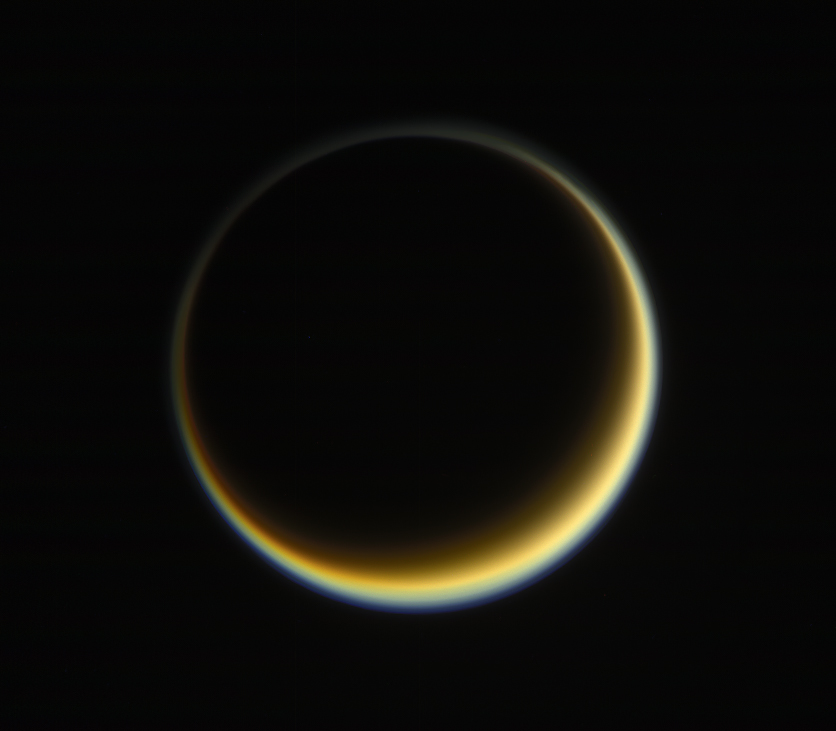
NASA's Cassini spacecraft looks toward the night side of Saturn's moon Titan in a view that highlights the extended, hazy nature of the moon's atmosphere.
NASA/JPL-Caltech/Space Science Institute
- Saturn's Great Storm of 2010-2011 generated disturbances that were felt many thousands of miles away.
- Storms like this one have been observed to erupt on Saturn every 20 to 30 years.
- Patterns of temperatures and winds in Saturn's stratosphere normally repeat about every 15 years in a cycle called the Quasi-Periodic Oscillation (QPO). Scientists think of the pattern as something like a planetary heartbeat.
- The Great Storm interrupted this cycle via the infusion of waves of energy into the stratosphere.
- Temperatures dropped about 10 Kelvin and disrupted wind patterns in the remote regions affected by the storm.
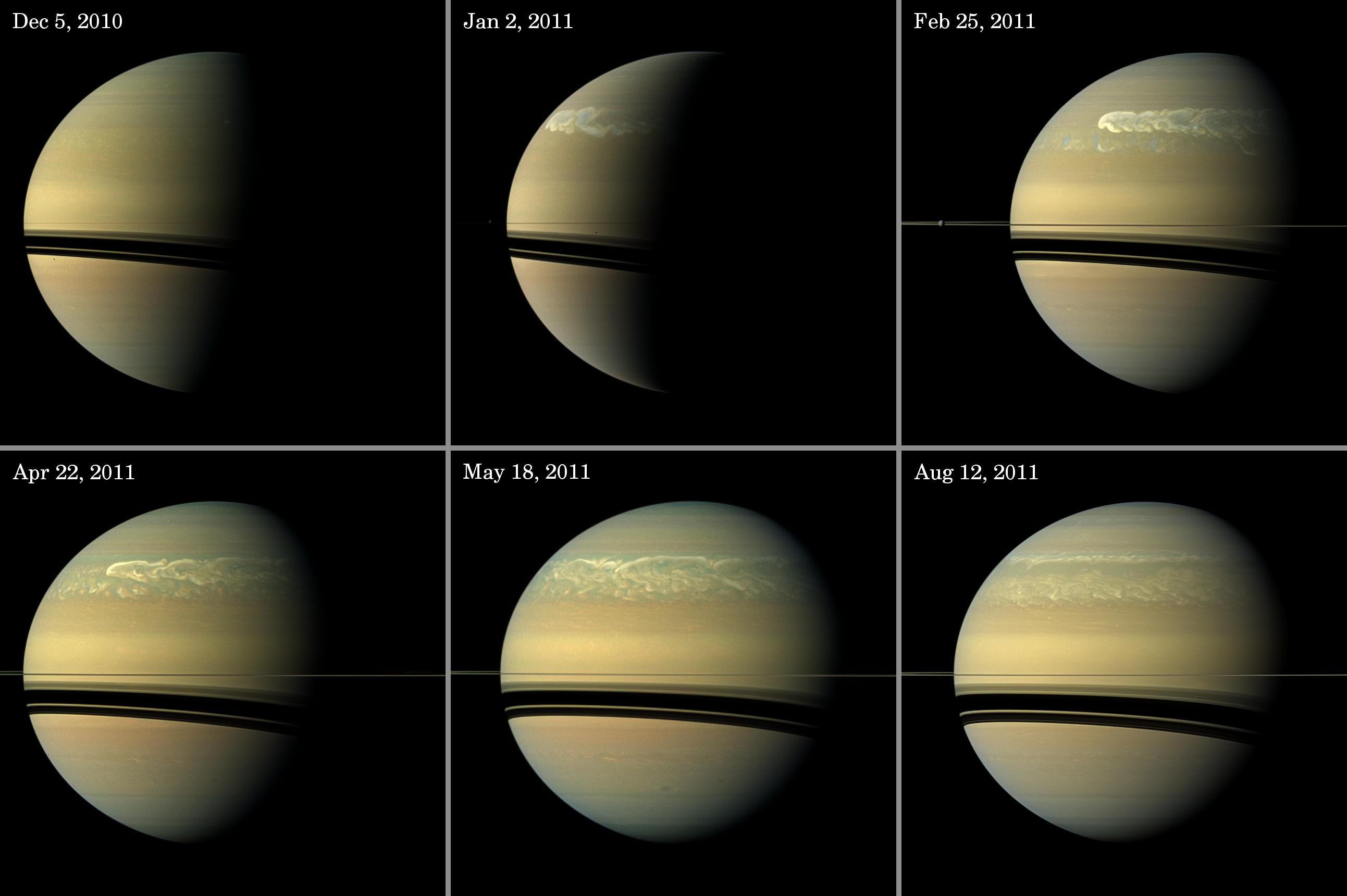
This series of images from NASA's Cassini spacecraft chronicle a large storm on Saturn from its start in late 2010 through mid-2011, showing how the distinct head of the storm quickly grew large but eventually became engulfed by the storm's tail.
NASA/JPL-Caltech/Space Science Institute
- Cassini scientists found evidence that the moon's spin axis -- the line through the north and south poles -- has reoriented, possibly due to a collision with a smaller body, such as an asteroid.
- Examination of features on Enceladus indicates that it may have tipped away from its original axis by about 55 degrees -- more than halfway toward rolling completely onto its side.
- Scientists speculate that the area around the icy moon's currently active south pole may have been struck in the past by an asteroid when the region was closer to the equator.
- The resulting unstable, wobbly rotation would have eventually stabilized, likely taking more than a million years.
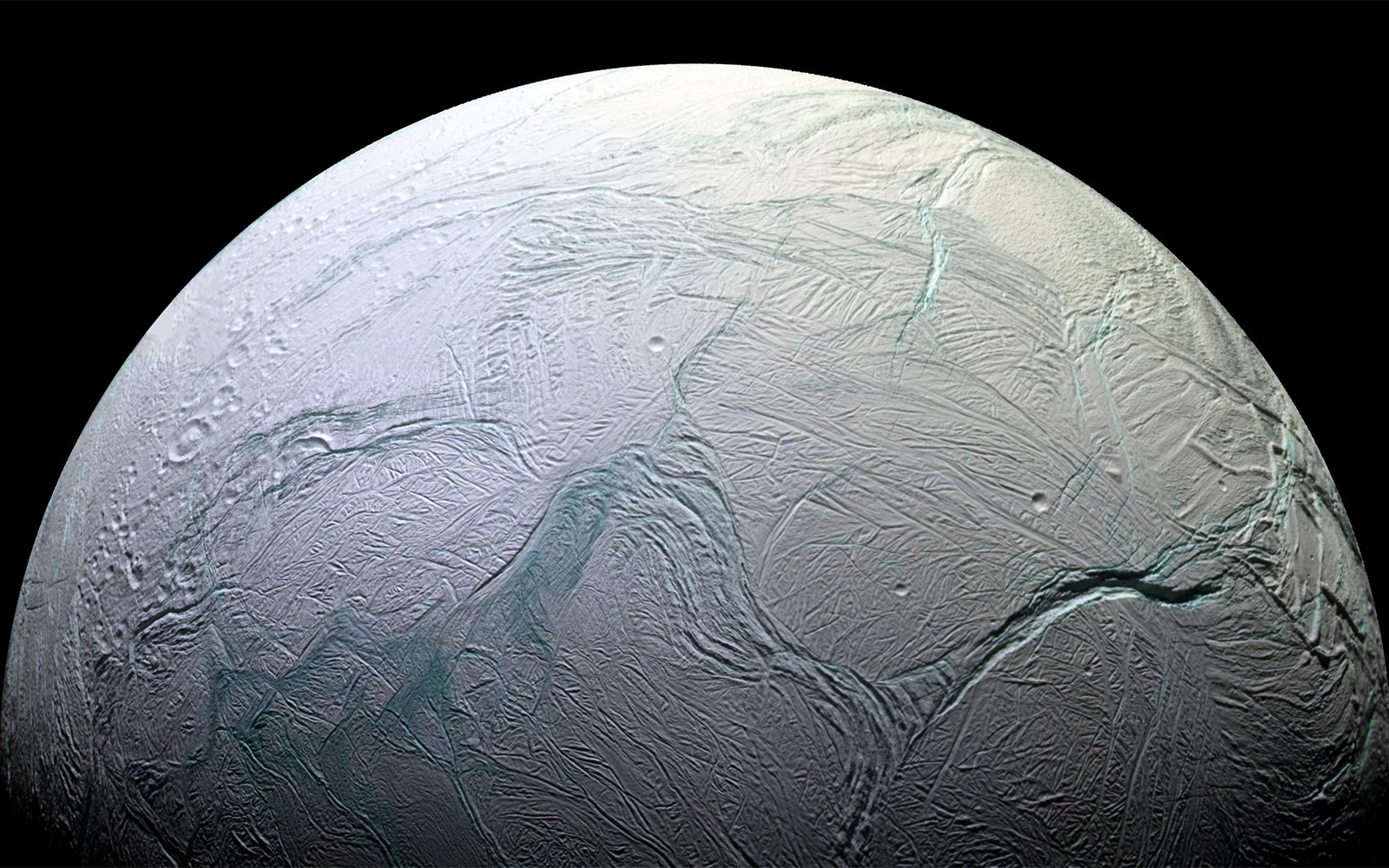
Enceladus is an icy world much like Hoth, except that it has an ocean under its frozen crust. Astronomers believe this moon of Saturn may be a good candidate for having extraterrestrial life beneath its surface.
NASA/ESA/JPL-Caltech/Space Science Institute
